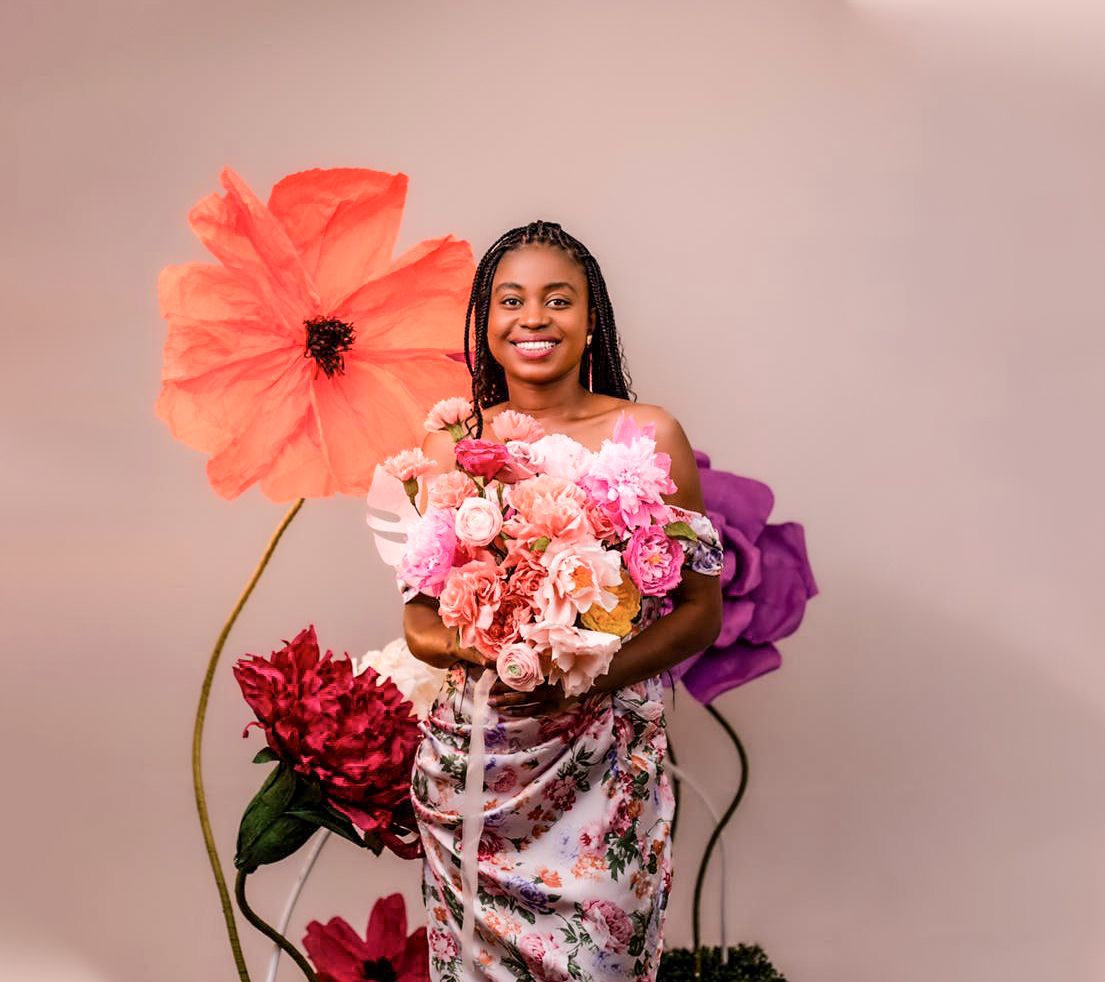News
Here’s How Zimbabwean Florist Precious Guwira Brings Nature to Life with Paper Flowers
Former journalist Precious Tariro Guwira was always naturally talented with handicrafts, but she never for a moment considered crafting as a career path, despite being the go-to person in her social circles for creative space decoration. That was before she began volunteering at her local church in Mutare, in eastern Zimbabwe. Her speciality is paper flowers.
“From crafting church decorations, I also started beautifying homes, workplaces, hotels, weddings, birthday parties, and engagements. On popular holidays such as Valentine’s Day and Mother’s Day, I become particularly busy as more people appreciate the idea of long-lasting paper flowers that can serve as a keepsake,” she said, looking back at her journey to becoming a full-time artisan.
“The dream was so straightforward that I left my journalism job to pursue paper flower-making,” she said.
But the reality wasn’t quite as straightforward as she’d presumed.
“I had to familiarise myself with various types of paper required for creating realistic botanical flowers. I was amazed to discover the diverse range of papers available. Some papers required kneading to increase flexibility, while others needed heating before curling. I also had to paint or dampen some papers to achieve the desired colours before drying them,” she said, explaining that gaining the experience required took longer than expected.
“With my experience, I can now quickly determine which paper suits a specific project to achieve a long-lasting effect,” she said.
The paper florist now uses a mix of recycled and imported florist paper that can be dyed and curled, or even ironed, straightened, creased, or stretched.
“I create water-resistant flowers using imported foam paper, and I use organza silk to make giant flowers. I also recycle paper that can be easily manipulated, especially for curling petals. However, I do not use the paper typically used for writing or drawing. The paper I use is unique and is specifically used to make long-lasting and unique paper flowers.”
Natural flowers inspire Guwira’s creativity, and she spends time studying each one. She observes their growth process, the number of petals, the central stamen, the seal, the stem, and the leaves.
View this post on Instagram
“For example, I deconstruct a rose, petal by petal, until I reach the centre.” Then I traced the petals onto paper to create templates for our paper flowers. I have a collection of templates for classic roses, David Austin’s garden roses, hydrangeas, sunflowers, gladiolus, lilies, peonies, and many more. The list keeps growing since there are over 1,000 varieties of flowers and plants out there. Once we trace the template onto the paper, we use it to cut the paper and let the magic happen as we create the paper flowers, petal by petal.
It’s a relaxing process, and the most unique and beautiful thing about paper flowers is that no two roses look alike, and there is no right or wrong way to arrange the petals as long as they are orderly. After all, Mother Nature herself is not consistent in what she produces,” she explained.
Guwira has since named her project “Helia Paper Flowers”, referencing the sun, its aura, and the radiance associated with the beauty of the rising sun in the morning.
View this post on Instagram
She is still regularly faced with the challenge of convincing people to embrace and accept paper flowers while compensating her fairly for her efforts. The average cost of her creations is US$60.
“Paper flowers are a new thing, and more people are used to fresh flowers. So, to capture the target market, I have tried to devise ways and strategies to push the paper flower agenda smoothly. Most people think we use the ordinary paper we use to write and draw on. So one can say the charge for a bouquet is too much for paper. As well as the storage of the giant flowers since I am currently working from my mother’s living room,” she said.
The paper florist hires part-time staff to assist with cutting and assembling when she receives large orders, but the inconsistency of those orders means she cannot afford her workspace due to the high costs.
“I’m still working from my mom’s living room at the moment because, after carefully doing the math of paying taxes and then adding rent, which ranges from $450 to $600, I saw it best to continue at home at the moment.
The biggest challenge is the storage of our giant flowers. At the moment we hang them on walls, and some we close in the petals and nicely store them away in boxes, and then when we want to use them, we open the petals and shape them again.”
Guwira caters to a broad spectrum of clients, such as event organisers, designers, balloon artists, corporate entities, individuals, and religious institutions. She markets her products through social media platforms and a WhatsApp catalogue and offers delivery services for all orders.
View this post on Instagram
“I love her creations; they outlast the event and augment the memories. The flowers are like a physical manifestation of our inner beings; the creations speak to you,” said Charlotte Tudhe Mutambara, a regular client who places orders for functions.
“Tariro is incredibly creative and has a talent for making paper flowers that look just like the real thing. Last year, while I was still working in the USA, I ordered two Mother’s Day bouquets from her. Her paper flowers are stunning, timeless, and make for the perfect everlasting gift for those special people in our lives,” said Fadzai Lynette Masiya, another client.
Guwira believes that people should consider paper flowers due to their numerous advantages, particularly their eco-friendliness.
“Paper flowers offer versatility to achieve the same look as real flowers but with a lasting impression. They are available in and out of season, they are allergy-free, they don’t need water or sunlight to bloom, and they can be repurposed. Above all, they are eco-friendly as they are not replaced every day,” she concluded.
Story/Photo Credit: Mandy Kanyemba for bird story agency
























